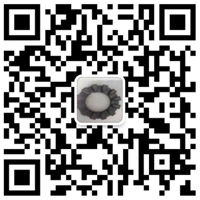Neodymium magnets are the strongest magnets accessible.
Like Samarium Cobalt, Ndfeb is termed a Rare Earth magnet. The Neodymium magnets are made of an amalgam basically comprising of Neodymium, Iron and Boron and the combination is synthetically composed as Nd2fe14b. Despite the fact that Neodymium magnets regularly composed as Ndfeb or Neodymium, it is frequently given the epithet of "Neo".
Up to +150 degrees C, the Neodymium magnets are the strongest entertainers. Between +130 degrees C and +160 degrees C, there is a cover in execution in the middle of Ndfeb and Smco. Over +150 degrees C Smco gives the more prominent execution.
The "Neo" magnets are a first decision for some applications as they offer the best execution with the littlest volume. Neodymium magnets exist in an assortment of evaluations. These evaluations fluctuate in attractive yield execution as well as change with temperature rating. The most extreme proposed temperature of operation for the "Neo" magnets is +200 to +230 degrees C despite the fact that as far as possible is really subject to the magnet shape and the aggregate attractive circuit (so as far as possible are truly just unrefined rule values). This is talked about in the segment called Temperature Ratings.
All the Neodymium magnets are inclined to erosion (a strategy like rusting). All Neodymium magnets will oblige a manifestation of defensive covering. The standard covering is a triple layer plating of Nickel-Copper-Nickel (Ni-Cu-Ni). Unless asked for something else, this Ni-Cu-Ni covering is constantly connected to the magnets. It ought to be noted that the level of assurance given by any covering relies on upon the environment the magnet will be subjected to and how the covering is taken care of.
The attractive yield from the "Neo" magnet differs with temperature. The yield falls with expanding temperature yet typically returns as it cools (the level of fall with climbing temperature is reliant on the reversible temperature coefficients). It is conceivable to forever diminish the attractive yield through excessively high a temperature (a lasting demagnetisation).
The level of lasting demagnetisation relies on upon the magnet shape, the aggregate attractive circuit and the real state of the BH bend (which will fluctuate relying upon the evaluation of "Neo" picked). Neodymium magnets are additionally influenced by outer demagnetisation fields and by radiation, both of which can demagnetise the magnet, the last forever demagnetising.
On the off chance that the client comprehends the constraints of Ndfeb and comprehends their application, the utilization of Ndfeb magnets can permit exceptionally smaller outlines with elite with issues influencing the execution. For note, if the magnet is kept in dry conditions at all times and the plating is not broken and no outer demagnetising fields are connected to it, the magnet hypothetically can hold its attraction inconclusively.
The following segments will reveal to you how Ndfeb magnets are made, the evaluations accessible, the impacts of temperature and how to use in addition to get the most out of neodymium magnets..




 Copyright © 2016 Shenzhen City Ri Shengchang Magnet Technology Co., Ltd All Rights Reserved.
Copyright © 2016 Shenzhen City Ri Shengchang Magnet Technology Co., Ltd All Rights Reserved.